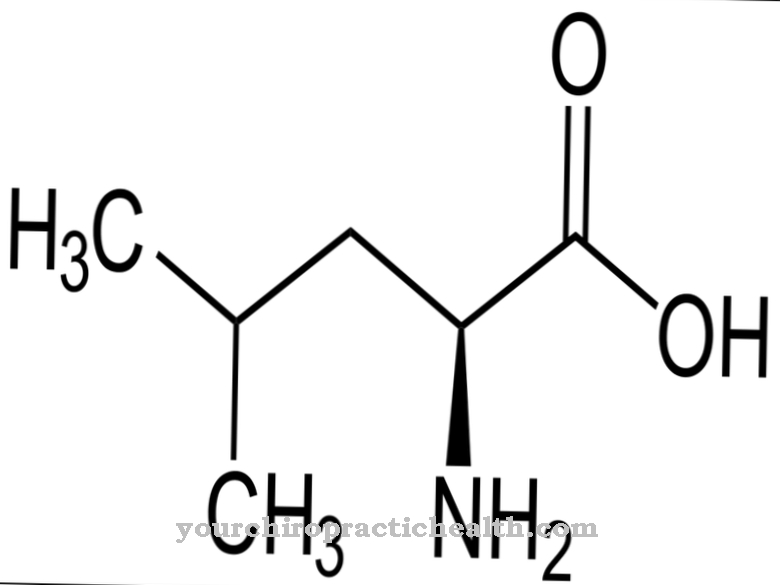At the Pleural mesothelioma it is a rare malignant tumor of the pleura. In most cases, long-term contact with asbestos dust can be assumed to be the cause. The disease is incurable and can only be treated palliatively.
What is pleural mesothelioma?

© Alila Medical Media - stock.adobe.com
The Pleural mesothelioma represents a malignant tumor of the pleura, ie the pleura. It is a cancer with a very poor prognosis. The tumor is often recognized late because the previous processes develop very slowly. However, after diagnosis, the median lifespan is only 18 months.
Of course, there are also extreme deviations in individual cases. However, a cure is usually not possible because the diagnosis is usually only made when almost the entire pleura is affected. After exposure to asbestos, pleural mesothelioma can develop after about 20 to 50 years. This cancer used to be very rare.
However, its frequency is increasing and, according to estimates by scientists, will peak in the 1930s. Only then do the after-effects of the decades-long influence of asbestos dust come into effect. It mainly affects people who have worked with asbestos. The pleura represents the outer skin of the lungs, covers it completely and at the same time lines the chest cavity.
It consists of a layer of squamous epithelium, which is separated from a layer of connective tissue by the pleural space. Both layers can be affected by the tumor. Squamous cell tumors are referred to as epithelial mesothelioma and tumors of the connective tissue layer as sarcomadoid mesothelioma.
The mixed type of both mesotheliomas is called biphasic mesothelioma. The epithelial mesothelioma is by far the most common. Sarcomadoid mesothelioma is the rarest.
causes
The main cause of pleural mesothelioma is the long-term occupational exposure of the affected person to asbestos dust. Today's occupational safety measures largely prevent asbestos or other mineral fiber dusts from being inhaled. However, the dangerousness of these substances was previously unknown.
Asbestos or other mineral fibers consist of long-chain silicate fibers. When these fibers are inhaled, they lodge in the lungs and pleura without breaking down. In trying to get rid of the fibers, the immune system creates inflammatory responses in the affected areas, which are always associated with tissue death.
Since the asbestos fibers do not dissolve, the inflammation becomes chronic. However, the dead tissue cells of the pleura or the lungs have to be constantly replaced. The permanent regeneration of tissue can, after a long time, also produce degenerate cells that have lost their control over cell division. Cancer develops.
Symptoms, ailments & signs
In fully developed pleural mesothelioma, the entire pleura is affected by cancer. The process of cancer formation and growth usually takes a long time. The chronic inflammatory reactions begin with the first exposure to asbestos fibers. However, no symptoms appear at the beginning.
In the run-up to tumor development, tissue changes can occur in the context of so-called asbestosis or dust lung, which can lead to respiratory problems. Pleural mesothelioma can also develop without prior asbestosis.
The first symptoms often only appear at a very late stage, when almost the entire pleura is affected. Typical symptoms are shortness of breath, chronic irritation of the throat, severe weight loss, states of exhaustion and severe pain in the chest area. So-called pleural effusions often occur.
These arise from fluid formation in the course of inflammatory processes in the pleura. The breathing difficulties and pain are caused on the one hand by this accumulation of fluid and on the other hand by the solidification of the pleura as a result of cancer growth. The lungs can no longer expand properly.
Metastases form relatively late. The disease always leads to death if left untreated. It is usually not curable even through therapy. But the survival time can be increased somewhat.
Diagnosis & course of disease
The diagnosis of pleural mesothelioma is usually only made at an advanced stage.Imaging procedures such as CT, MRI or X-ray examinations are carried out. A bronchoscopy with sampling is performed to differentiate it from bronchial carcinoma in the differential diagnosis.
In the case of a pleural puncture, the detection of tumor cells is possible in some cases, but a lack of detection does not rule out pleural mesothelioma. The most certain way to confirm the diagnosis is through a thoracoscopy.
Complications
Unfortunately, pleural mesothelioma can no longer be treated or completely cured. Because of the tumor, the life expectancy of the person affected is drastically reduced. However, the further course of the disease depends very much on the severity and exact location of this tumor, so that a general prediction is not possible. Patients with this disease primarily suffer from severe breathing difficulties.
This leads to gasping and an insufficient supply of oxygen to the body. Permanent fatigue and exhaustion can also occur due to pleural mesothelioma and significantly reduce the quality of life of the person affected. In most cases, people also experience chest pain and severe weight loss. Metastases can also develop and continue to lead to cancer in other regions of the body.
As a rule, the affected person dies prematurely due to pleural mesothelioma. The pleural mesothelioma can no longer be treated. Various therapies can alleviate the symptoms and extend the life expectancy of the patient. However, these are always palliative measures. As a rule, there are no particular complications.
When should you go to the doctor?
With pleural mesothelioma, a visit to a doctor is always necessary. This disease does not heal itself and in most cases the symptoms worsen if no treatment is initiated. The earlier treatment begins, the greater the likelihood of a positive course of the disease. The doctor should then be consulted if the pleural mesothelioma causes symptoms in the area of the lungs.
People have a severe cough and generally have respiratory problems. There is also exhaustion and severe weight loss for no particular reason. If the pleural mesothelioma is still not treated, metastases will form and the person concerned will continue to die. Life expectancy is significantly reduced and restricted by this disease.
Furthermore, pain in the chest area can indicate pleural mesothelioma and should be examined by a doctor if it does not go away on its own and occur over a longer period of time. Usually, pleural mesothelioma can be diagnosed by an internist. However, further treatment requires surgery and is therefore carried out in a hospital.
Treatment & Therapy
Similar to other malignant tumors, the three treatment methods of surgery, radiation and chemotherapy are combined with one another in pleural mesothelioma. There is no general recommendation for performing the therapy. Treatment depends on physical fitness and the stage of the disease.
In unilateral pleural mesothelioma, the removal of one half of the lung including the pleura can help to extend life. The surgical method is then combined with chemotherapy and radiation. In chemotherapy, the cytostatic agent Permetrexed is administered together with a preparation containing platinum.
It has also been shown that the additional administration of the vascular growth-inhibiting monoclonal antibody bevacizumab improves survival time. Usually, however, this is only a matter of a few months. In rare cases, however, life expectancy has been extended by several years. The therapies are palliative measures. A cure is not to be assumed.
prevention
Pleural mesothelioma can only be effectively prevented by preventing asbestos or mineral fiber exposure. Previously exposed people should definitely refrain from smoking, as it increases the risk of developing pleural mesothelioma even more.
Aftercare
In most cases, those affected with pleural mesothelioma have very few or only very limited measures available for direct follow-up care. Those affected are primarily dependent on a quick and early diagnosis so that there are no further complications or further complaints. If the tumor has already spread in the body, this disease can sometimes no longer be completely cured.
In this case, the life expectancy of the patient can be significantly reduced by the pleural mesothelioma. People usually need chemotherapy to remove the tumor. Most of those affected also need the support and care of their own family and friends.
Among other things, loving and intensive conversations have a very positive effect on the further course of the illness and can also prevent depression or other psychological upsets. Even after successful therapy, regular checks by a doctor are very important in order to detect other tumors at an early stage. The further course depends very much on the time of diagnosis, so that a general prediction cannot be made.
You can do that yourself
Because the diagnosis of pleural mesothelioma is generally quite late, the patient can usually hardly contribute anything to the healing process. The focus for him is therefore on improving his own quality of life and his own well-being.
On the one hand, it is recommended that the patient avoid putting additional strain on the diseased lungs. These include, among other things, smoking, staying in inner-city locations polluted with fine dust, as well as intensive sporting activities. On the other hand, trips to regions with very good air quality are useful, if still possible. These can also reduce unnecessary stress, which would put additional strain on the already weakened body. The patient is also advised to learn special breathing exercises to strengthen the lungs.
On the other hand, it is advisable to seek psychological support as well. A tumor disease is a serious turning point in life that can be proven to be easier for the sick person to deal with with qualified therapy or a visit to a self-help group. Possible prejudices or shame should be put aside against the background of the severity of the disease.
When it comes to nutrition, you should also pay attention to your well-being. You can eat what tastes good. Due to the mostly existing loss of appetite, all that is important is an adequate intake of calories and nutrients.








.jpg)



















